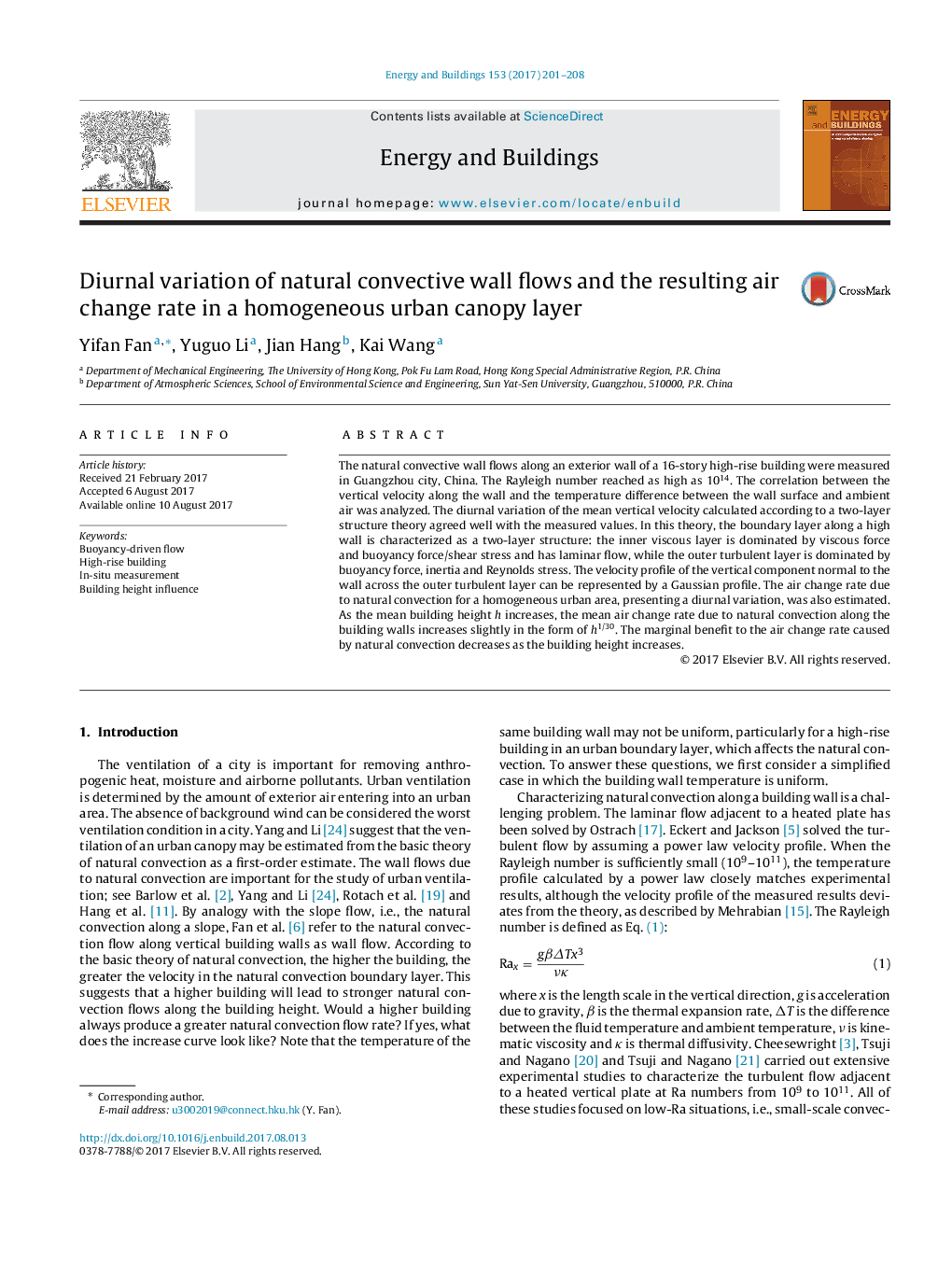| Article ID | Journal | Published Year | Pages | File Type |
|---|---|---|---|---|
| 4918981 | Energy and Buildings | 2017 | 8 Pages |
Abstract
The natural convective wall flows along an exterior wall of a 16-story high-rise building were measured in Guangzhou city, China. The Rayleigh number reached as high as 1014. The correlation between the vertical velocity along the wall and the temperature difference between the wall surface and ambient air was analyzed. The diurnal variation of the mean vertical velocity calculated according to a two-layer structure theory agreed well with the measured values. In this theory, the boundary layer along a high wall is characterized as a two-layer structure: the inner viscous layer is dominated by viscous force and buoyancy force/shear stress and has laminar flow, while the outer turbulent layer is dominated by buoyancy force, inertia and Reynolds stress. The velocity profile of the vertical component normal to the wall across the outer turbulent layer can be represented by a Gaussian profile. The air change rate due to natural convection for a homogeneous urban area, presenting a diurnal variation, was also estimated. As the mean building height h increases, the mean air change rate due to natural convection along the building walls increases slightly in the form of h1/30. The marginal benefit to the air change rate caused by natural convection decreases as the building height increases.
Related Topics
Physical Sciences and Engineering
Energy
Renewable Energy, Sustainability and the Environment
Authors
Yifan Fan, Yuguo Li, Jian Hang, Kai Wang,
